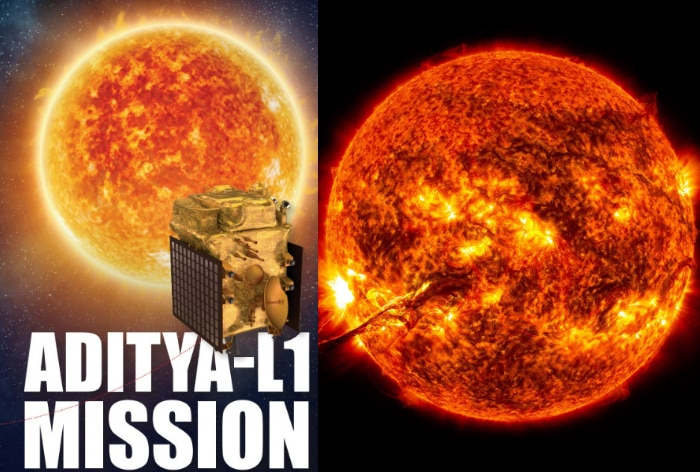
[ad_1]
Aditya-L1 has successfully escaped Earth’s sphere of influence and covered a distance of over 9.2 lakh km to date.

Aditya-L1 Update: Aditya-L1, India’s space-based solar observatory, has successfully escaped the sphere of Earth’s influence and has covered a distance of over 9.2 lakh km to date. This was announced by the Indian Space Research Organisation (ISRO) on Saturday. Aditya-L1 is now navigating its path towards the Sun-Earth Lagrange Point 1 (L1), said the Indian space agency as it quoted, “This is the second time in succession that ISRO could send a spacecraft outside the sphere of influence of the Earth, the first time being the Mars Orbiter Mission.”.
Aditya-L1 Mission:
🔸The spacecraft has travelled beyond a distance of 9.2 lakh kilometres from Earth, successfully escaping the sphere of Earth’s influence. It is now navigating its path towards the Sun-Earth Lagrange Point 1 (L1).
🔸This is the second time in succession that…
— ISRO (@isro) September 30, 2023
Special Feat Achieved By ISRO
With this mission, ISRO has for the fifth consecutive time successfully transferred an object on a trajectory toward another celestial body or location in space. Earlier, ISRO transferred its spacecraft thrice towards the moon and once towards Mars.
The Aditya-L1 was orbited in low earth orbit (LEO) on September 2 by the Indian rocket Polar Satellite Launch Vehicle –XL (PSLV-XL) variant. The spacecraft’s orbit has been raised by the ISRO four times since then.
The Data Would Provide Insights Into Several Phenomena
The data collected around L1 would provide insights into the origin, acceleration, and anisotropy of solar wind and space weather phenomena.
Aditya-L1 will be placed in a halo orbit around Lagrangian Point 1 (L1). It will revolve around the Sun with the same relative position and hence can see the Sun continuously.
As the spacecraft travels towards Lagrange Point (L1) after exiting the earth’s gravitational sphere of Influence (SOI), the cruise phase will start and subsequently, it will be injected into a large halo orbit around the L1 — the point where the gravitational pull of two large bodies – Sun and Earth – will be equal and hence the spacecraft will not gravitate towards any one of them.
Total Travel Time And Distance
The total travel time from launch to L1 would take about four months for Aditya-L1 and the distance will be about 1.5 million km from the Earth.
Aditya-L1 spacecraft carries a total of seven different payloads to study the Sun, four of which will observe the light from the Sun and the remaining three will measure in-situ parameters of the plasma and magnetic fields.
About Aditya-L1
Aditya-L1 is a coronagraphy spacecraft to study the solar atmosphere, designed and developed by the Indian Space Research Organisation (ISRO) and various other Indian research institutes. It will be orbiting at about 1.5 million km from Earth in a halo orbit around the L1 Lagrange point between the Earth and the Sun where it will study the solar atmosphere, solar magnetic storms, and their impact on the environment around the Earth.
First Indian Mission To Observe Sun
It is the first Indian mission dedicated to observing the Sun. Nigar Shaji is the project’s director. Aditya-L1 was launched aboard the PSLV C57 on 2 September 2023, 10 days after the successful landing of ISRO’s Moon mission, Chandrayaan-3. It successfully achieved its intended orbit nearly an hour later and separated from its fourth stage. It is projected to reach its designated orbit at the L1 point approximately 127 days after its launch.
[ad_2]